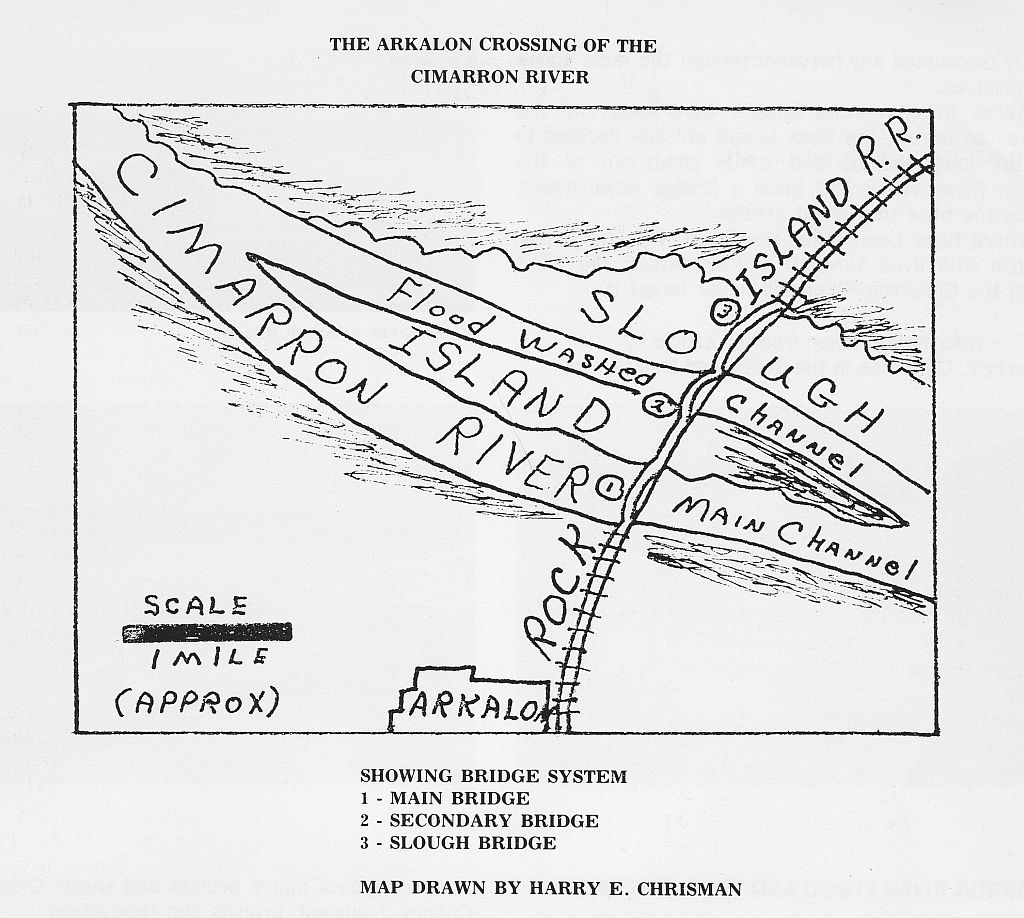by Harry E. Chrisman originally published in the Southwest Daily Times
Newcomers to Seward County may be skeptical that the Cimarron River can go on a rampage at times that rivals the floods and damage of the Arkansas, the Kaw, the wide Missouri or the great Mississippi. Bon on Friday, May 1, 1914 after five years of drought, heavy rains occurred in the head waters of the Cimarron in New Mexico. Heavy rains continued of and on for two days and nights. The rains became general and by Saturday noon three inches had fallen in Liberal. By Saturday afternoon the ranchers and families along the Cimarron had begun to move their livestock and families to higher ground.
By noon on Sunday, Mary 3, the flood waters had crested and the curious were out in numbers to watch as the river widened to a mile wide. The water had begun to erode the pilings of the river road and the railroad bridges. The railroad section crews were attempting to reinforce the bridge and do rip-rap work along the south bank.
When the telegraph and telephone wires across the river were washed away, Tom Ward, a railroad section man, made an attempt to swim the river to take the wires across. When he reached the swollen stream bed, the section foreman, and the section crew did everything possible to save him but to no avail. Ward's battered body was recovered several days later more than three miles downstream.

At Arkalon there were three railway bridges, one over the main channel, one over a channel made by a previous flood, and the third over the slough. By this time the main bridge had been completely washed away and the secondary bridges were being threatened.
All the facilities of the railway company were working feverishly to save the remaining bridges, when J B Smalley, the general manager for the Rock Island, dropped from exhaustion and fatigue. Mr Smalley was taken to Topeka by Dr Jones and Dr Nichalson where he died of what was called "a stroke of apoplexy."
Three men, C H Leete, of the steam laundry; P C Emerson; and Ernest Fulton managed to swim the swollen river in their determination to reach their homes.
Many lives were lost in the flood. Perry Brite and his two daughters were swept downstream. Mr Brite was rescued but both girls were drowned; and their bodies found several days later mreo than fifty miles downstream at the Hirn Ranch northeast of Liberal. The body of a Mr Pryor, swept away near Satanta, was found under the bridge piling near the Hirn Ranch.
There also was great loss of livestock. Raymond McClure lost side head of horses. W C Stout reported 60 head of cattle drowned. Floyd Heaton lost six dairy cows and almost all ranchers along the Cimarron west into New Mexico suffered some flood related losses.
With the railroad bridges on the Cimarron at Arkalon washed out and the Rock Island bridge on the Beaver River at Optima, Oklahoma washed away, Liberal was marooned for four days. By Tuesday, May 5, the bridge over the Beaver River had been rebuilt by 300 railway hands working around the clock and the mail had come through from the west. Thursday, May 7, the mail from the east came through along the telegraph service,. This is the flood that destroyed the springs on the river from which Fargo Springs and Springfield derived their names.
Burris Wright related how E W "Lige" Wright swam this horse through the swollen river four times to rescue the Erickson family of four: the mother, father and two daughters. The water was up to the second story windows and had begun to wash away the foundation of the stone house. Forty years later, Burris Wright stated, "It was a might brave thing to do and I admire that boy for his courage. He could have lost his life." E W "Lige" Wright, later contacted at his home at 21 South Clay, Liberal, modestly disclaimed any heroism; though the facts speak for themselves.
As all three railroad bridges were gone and the river so unruly the Rock Island officials decided to avoid the long, tedious and costly climb out of the Cimarron River valley and build a bridge downstream. This was the blow which killed Arkalon.
There have been other floods on the river since but those who lived through and witnessed the 1914 flood on the Cimarron River will never forget it.